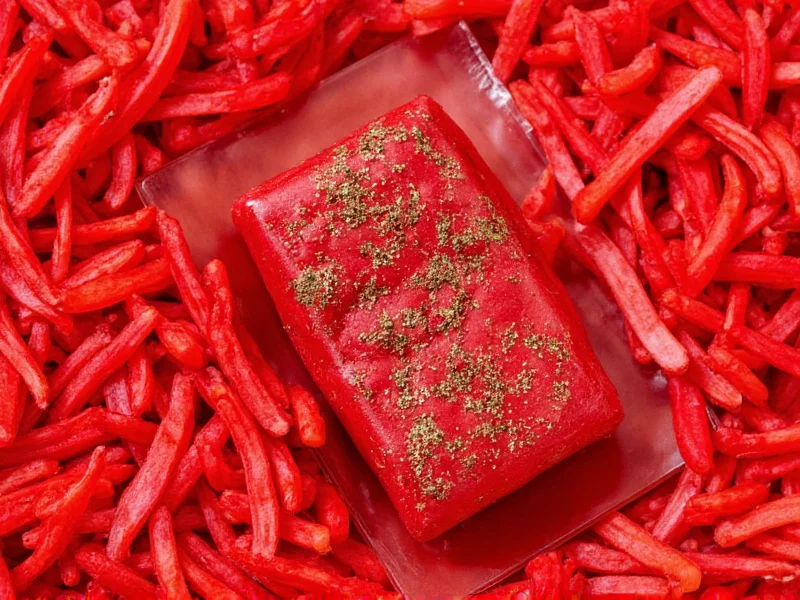Chamoy has become a staple in Mexican cuisine and global flavor trends, with the "mega" designation indicating a specialized product formulation. This guide explores everything you need to know about chamoy mega, from its distinctive characteristics to practical applications that go beyond basic dipping.
Understanding Traditional Chamoy First
Before examining chamoy mega specifically, it's essential to understand the foundation. Traditional chamoy is a complex sauce blending sweet, sour, salty, and spicy elements. The base typically includes:
- Dehydrated fruits (apricots, plums, or mangoes)
- Chili powder (usually árbol or de árbol)
- Vinegar or lime juice
- Salt and sugar
- Preservatives for shelf stability
This combination creates the signature flavor profile that has made chamoy popular across snack foods, street cuisine, and modern fusion dishes.
What Makes Chamoy Mega Different
Chamoy mega isn't just a larger container—it represents a specialized product variant with distinct characteristics:
| Feature | Standard Chamoy | Chamoy Mega |
|---|---|---|
| Consistency | Thin to medium | Thick, almost paste-like |
| Flavor Intensity | Moderate | Amplified (30-50% stronger) |
| Container Size | 8-16 oz | 32 oz or larger |
| Primary Use | Personal consumption | Commercial/food service |
| Price per Ounce | Higher | 20-30% lower |
The "mega" designation typically indicates a product engineered for food service professionals or enthusiastic home cooks who regularly incorporate chamoy into their recipes. Manufacturers achieve the intensified flavor through concentrated fruit extracts and optimized chili ratios rather than simply increasing preservatives.
Authentic Ingredients in Quality Chamoy Mega
When evaluating chamoy mega products, look for these authentic components that distinguish premium versions from inferior imitations:
- Umeboshi paste - Traditional Japanese pickled plum that provides depth
- Tamarind concentrate - Adds complex sour notes
- Multiple chili varieties - Typically árbol for heat and guajillo for flavor
- Natural fruit pulps - Mango or apricot without artificial flavors
- Minimal preservatives - Quality products use citric acid rather than sodium benzoate
Avoid products listing "chamoy flavor" as an ingredient, which indicates artificial flavoring rather than genuine fruit and chili components. The best chamoy mega products maintain ingredient transparency on their labels.
Practical Applications Beyond Basic Dipping
While many people use chamoy simply for dipping fruit or snacks, chamoy mega's concentrated formula unlocks professional culinary applications:
Marinades and Glazes
Dilute chamoy mega with equal parts pineapple juice and a touch of honey for an exceptional meat marinade. The enzymatic action of the fruit components tenderizes proteins while the complex flavors penetrate deeply. Try this with:
- Pork shoulder for carnitas
- Chicken thighs for grilling
- Shrimp for skewers
Sauce Base for Creative Fusion
Professional chefs use chamoy mega as a base for innovative sauces:
- Mix with mayonnaise for a spicy dipping sauce
- Combine with melted chocolate for mole-inspired dishes
- Blend with Greek yogurt for a protein-packed salad dressing
Beverage Enhancements
Chamoy mega's concentrated formula works perfectly for cocktails and specialty drinks:
- Rim margarita glasses with chamoy mega mixed with tajín
- Add 1 tablespoon to fruit smoothies for complexity
- Create chamoy-infused simple syrup for craft cocktails
Storage and Shelf Life Considerations
Due to its concentrated nature, chamoy mega requires proper storage to maintain quality:
- Store unopened containers in a cool, dark pantry (up to 18 months)
- Refrigerate after opening (6-8 months shelf life)
- Use clean utensils to prevent contamination
- Check for separation—gently stir rather than shake
- Discard if mold appears or aroma changes significantly
The thicker consistency of chamoy mega means it's less prone to spoilage than thinner variants, but proper storage remains essential for maintaining the complex flavor profile.
Finding Authentic Chamoy Mega Products
When searching for genuine chamoy mega, consider these approaches:
- Look for Mexican specialty food distributors rather than general grocery stores
- Check for Spanish-language labeling which often indicates authentic production
- Seek products listing specific chili varieties rather than generic "chili powder"
- Consider regional Mexican brands that have expanded distribution
- Ask at authentic Mexican restaurants which brands they use commercially
The growing popularity of chamoy has led to many imitations, so verifying the ingredient list remains crucial when selecting a quality chamoy mega product.
Culinary Innovation with Chamoy Mega
Chefs worldwide are discovering innovative applications for chamoy mega that extend far beyond traditional uses:
- Dessert applications: Swirl into cheesecake batter or ice cream base
- Pizza innovation: Use as a base sauce for Mexican-inspired pizzas
- Cheese pairings: Complement aged cheeses with small drizzles
- Breakfast twist: Add to pancake or waffle batter for savory-sweet complexity
- Cocktail innovation: Create chamoy-infused spirits through fat-washing techniques
The concentrated nature of chamoy mega makes it particularly valuable for recipe development where flavor intensity matters without adding excess liquid.











 浙公网安备
33010002000092号
浙公网安备
33010002000092号 浙B2-20120091-4
浙B2-20120091-4